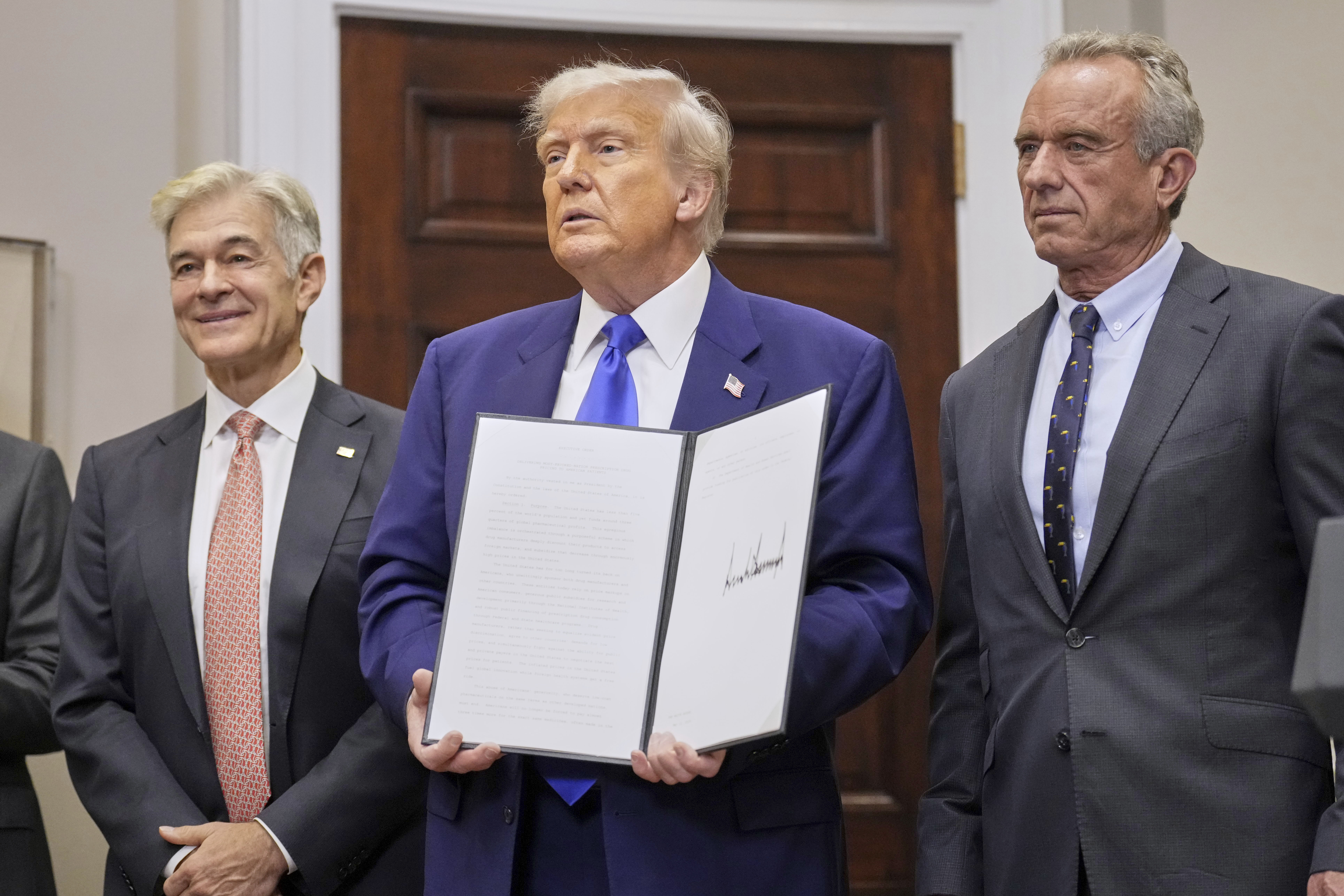Lower US Drug Prices: Trump's "Most Favored Nation" Plan
Trump's "Most Favored Nation" Order: Will Drug Prices Finally Fall?
Introduction: A Bold Move to Lower Drug Costs?
Are you tired of seeing your hard-earned money vanish on expensive prescription drugs? Well, you're not alone. For years, Americans have been paying significantly more for medications than people in other developed countries. But hold on, there might be some hope on the horizon! Former President Donald Trump, before leaving office, made a significant move by attempting to tackle this issue head-on. He revived a controversial policy aimed at slashing drug costs by tying U.S. prices to those in other nations. But what exactly does this mean, and will it really work? Let's dive in and explore the details of this executive order and its potential impact on your wallet.
What is the "Most Favored Nation" Policy?
The core of Trump's plan revolves around what's known as the "most favored nation" policy. This might sound like something out of international trade negotiations, and in a way, it is! The idea is simple: the U.S. would pay no more for certain prescription drugs than the lowest price paid in other developed countries. This aims to eliminate the price disparity between the U.S. and nations where drug prices are much lower due to government negotiations and other factors.
Why is it Controversial?
Now, before you start celebrating, it's important to understand why this policy has stirred up so much debate. The pharmaceutical industry, naturally, isn't thrilled. They argue that this will stifle innovation and limit their ability to invest in research and development of new life-saving drugs. They also claim that it could lead to drug shortages in the U.S. and potentially harm patients. It's a complex issue with strong arguments on both sides.
How Does the Executive Order Work?
Trump's executive order outlined a multi-pronged approach to lower drug prices. While the "most favored nation" policy was a key component, it also included other actions aimed at increasing transparency and competition in the pharmaceutical market. It targeted specific drugs administered in doctors' offices, aiming to curtail Medicare Part B spending.
Targeting Medicare Part B Drugs
Medicare Part B covers drugs administered by physicians in their offices, such as chemotherapy treatments. The executive order proposed to adjust the reimbursement rates for these drugs, bringing them more in line with international prices. This could significantly impact the cost of these treatments for seniors and other Medicare beneficiaries. Reducing spending on Part B drugs was a primary goal of the order.
The Potential Benefits for Consumers
The biggest potential benefit for consumers is, of course, lower drug prices. Imagine paying the same amount for your medications as people in Canada or the UK! This could free up significant amounts of money for other essential expenses, especially for those with chronic conditions who rely on prescription drugs to manage their health. The promise of lower prices is a major draw for consumers struggling with healthcare costs.
Increased Affordability and Access
Lower drug prices could also lead to increased affordability and access to medications, particularly for those who are uninsured or underinsured. Many people currently skip doses or avoid filling prescriptions altogether due to cost. If prices came down, more people could afford the medications they need, leading to better health outcomes and a healthier society overall.
The Pharmaceutical Industry's Concerns
As expected, the pharmaceutical industry voiced strong opposition to the "most favored nation" policy. Their primary concern is that it will reduce their profits and disincentivize them from investing in research and development. They argue that the high cost of drugs in the U.S. is necessary to fund the development of new and innovative treatments.
Potential Impact on Innovation
The industry claims that if they are forced to lower prices to match those in other countries, they will have less money to invest in the development of new drugs. This, they say, could slow down the pace of medical innovation and ultimately harm patients. This is a central argument against the "most favored nation" policy.
Risk of Drug Shortages
Another concern raised by the pharmaceutical industry is the potential for drug shortages. If U.S. prices are significantly lower, they argue that manufacturers may prioritize selling drugs in other countries where they can get a higher price, leading to shortages in the U.S. This could be particularly problematic for patients who rely on specific medications to manage their health.
Legal Challenges and Implementation Hurdles
Even if the "most favored nation" policy is theoretically sound, there are significant legal challenges and implementation hurdles that need to be addressed. The pharmaceutical industry has already launched legal challenges to block the policy, arguing that it exceeds the President's authority and violates existing laws. Furthermore, negotiating agreements with other countries to tie drug prices could be a complex and time-consuming process.
The Role of the Courts
The courts will ultimately decide the fate of the "most favored nation" policy. If the policy is found to be legal and constitutional, it could move forward. However, if the courts rule against the policy, it could be blocked indefinitely. The legal landscape will play a crucial role in determining the future of this initiative.
How This Affects Your Insurance
If the order were to be fully implemented and effective, it *could* affect your insurance premiums over time. If insurance companies are paying less for prescription drugs, that *could* translate to lower costs for them, which *might* result in lower premiums for you. However, this is not a guaranteed outcome. Many factors influence insurance premiums, including the overall cost of healthcare, the risk pool of insured individuals, and the administrative costs of running the insurance company. Don't expect immediate or drastic changes, but it could contribute to more affordable healthcare in the long run.
The Global Impact of Drug Pricing Policies
It's important to recognize that drug pricing is a global issue with complex implications. Different countries have different healthcare systems, regulatory frameworks, and economic conditions. What works in one country may not necessarily work in another. The "most favored nation" policy could potentially impact drug prices in other countries as well, as pharmaceutical companies may adjust their pricing strategies in response to U.S. policies.
Comparing Healthcare Systems
Understanding the differences between healthcare systems is crucial for evaluating the effectiveness of drug pricing policies. Countries with universal healthcare systems, like Canada and the UK, have greater leverage to negotiate lower drug prices with pharmaceutical companies. The U.S., with its fragmented healthcare system, lacks this bargaining power. A key difference is the government's role in negotiating prices.
The Future of Drug Pricing Reform
Regardless of the fate of the "most favored nation" policy, the issue of drug pricing reform is likely to remain a major focus of political debate. There is widespread agreement that something needs to be done to address the high cost of prescription drugs in the U.S. Other potential solutions include allowing Medicare to negotiate drug prices, increasing competition among pharmaceutical companies, and importing drugs from other countries.
Potential Legislative Action
Ultimately, Congress may need to take legislative action to address the issue of drug pricing reform. Legislation could be passed to authorize Medicare to negotiate drug prices, streamline the drug approval process, or promote the development of generic drugs. Congressional action may be necessary to achieve lasting change.
Conclusion: A Complex Issue with No Easy Answers
Trump's "most favored nation" policy was a bold attempt to tackle the problem of high drug prices in the U.S. While it had the potential to significantly lower costs for consumers, it also faced significant opposition from the pharmaceutical industry and legal challenges. Whether or not this specific policy ultimately succeeds, it has brought attention to the urgent need for drug pricing reform. The future of drug pricing will likely depend on a combination of legislative action, market forces, and international cooperation. The key takeaway is that the fight for affordable prescription drugs is far from over.
Frequently Asked Questions
Q1: What exactly does the "most favored nation" policy mean?
The "most favored nation" policy proposes that the U.S. would pay no more for certain prescription drugs than the lowest price paid in other developed countries. Think of it like getting a price match guarantee on your medicine!
Q2: Why is the pharmaceutical industry against this policy?
The pharmaceutical industry worries that lower prices will reduce their profits and disincentivize investment in research and development of new drugs. They argue that the current high prices in the U.S. are necessary to fund innovation.
Q3: Will this policy immediately lower drug prices for me?
Not necessarily. Even if the policy goes into effect, it could take time for prices to adjust and for you to see the savings. Also, it may only apply to certain drugs covered by Medicare Part B initially. The full scope and timeline are uncertain.
Q4: What are some other possible solutions to lower drug prices?
Besides the "most favored nation" policy, other proposed solutions include allowing Medicare to negotiate drug prices, increasing competition among pharmaceutical companies, and importing drugs from other countries. Each approach has its own pros and cons.
Q5: How can I stay informed about drug pricing reforms?
Stay updated on news from reputable sources like the Kaiser Family Foundation, The New York Times, and The Wall Street Journal. You can also follow organizations advocating for lower drug prices and contact your elected officials to voice your concerns.



